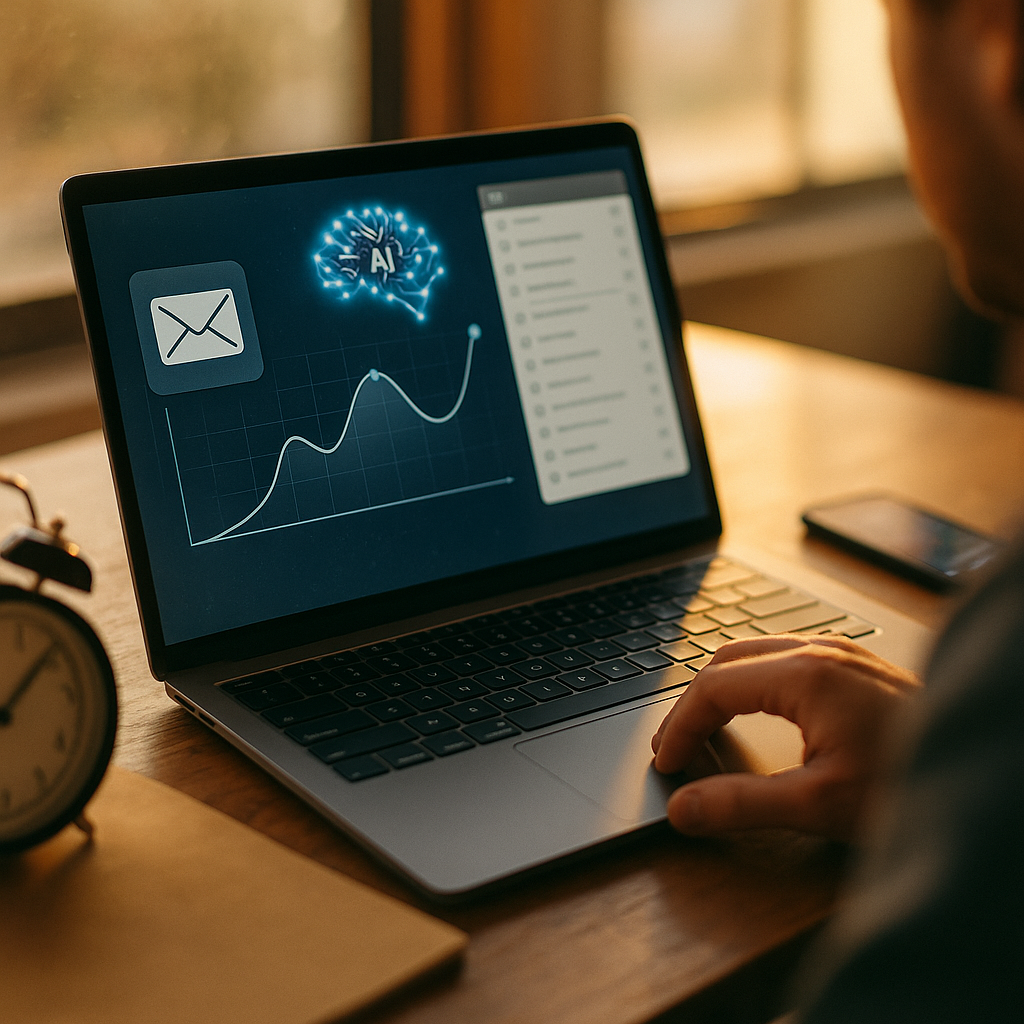Boosting open and response rates is vital for any modern campaign, and today, using AI to analyze and predict the optimal send time for your B2B email campaigns sets top marketers apart. Want to ensure your emails hit inboxes when the decision-makers are actually reading them? Discover how artificial intelligence is redefining the rules for email success.
How AI Is Revolutionizing B2B Email Send Time Analysis
The heart of every B2B email campaign’s success lies in timing. Traditionally, marketers relied on generic “best practices,” but AI-powered tools in 2025 leverage machine learning and big data to uncover nuanced behaviors unique to your audience. According to a recent HubSpot survey, campaigns using AI-driven send time optimization achieved an average of 23% higher open rates versus campaigns scheduled manually.
AI solutions study historical engagement, variable work schedules, and myriad contextual cues to offer data-driven recommendations tailored to your exact mailing list—not just industry averages. Decision-makers are busy, and their email habits are unpredictable; static scheduling simply can’t keep up with real-world complexity.
The Power of AI-Powered Predictive Analytics in Deliverability
Predictive analytics, a key secondary keyword, is fundamental for improving email deliverability and campaign relevance. Modern machines process billions of touchpoints: opens, click-throughs, device usage—even regional holidays and timezone shifts. This ongoing, real-time analysis pinpoints those fleeting windows when your B2B recipients are most receptive.
AI platforms, such as those from Salesforce or Mailchimp, utilize predictive analytics to continually refine each campaign’s scheduling parameters. These insights respond to changes, even as recipient habits evolve, ensuring your message avoids spam folders and stands out from the clutter.
Optimizing B2B Email Campaign Performance with Machine Learning
At the core of every winning email campaign in 2025 is a rapid, iterative process. By integrating machine learning models, your B2B campaigns can evolve with each send. These models analyze behavioral data—like prior opens, content interactions, and sent time—to spot patterns exclusive to your business environment.
Machine learning doesn’t just find the overall “best” time; it predicts individual optimal send windows. For example, an AI might notice that finance directors at tech firms open emails on Tuesday afternoons, while HR leaders in manufacturing engage more on Thursday mornings. Tailoring your send schedules accordingly can lift both engagement and conversion metrics substantially.
Personalization and Segmenting: AI’s Role in Advanced Targeting
B2B email marketing today depends on hyper-personalization. AI enables segmentation beyond demographics, considering behavior, industry, location, and even job seniority. By predicting the optimal send time for each audience segment, AI maximizes relevance. Automated systems dynamically adjust send times, ensuring each segment receives content precisely when they’re likely to act.
Studies cited in the Harvard Business Review indicate that segmented and personalized campaigns using AI-driven send time algorithms can drive up to 58% higher response rates compared to generic mailings. In a fiercely competitive B2B landscape, these incremental gains compound into major ROI improvements.
Implementing AI-Driven Send Time Optimization: Practical Steps
Deploying AI in your B2B email strategy begins with robust data collection—quality matters as much as quantity. Clean, well-segmented email lists provide the raw material for accurate AI analysis. Next, invest in a trusted platform equipped with advanced predictive analytics and machine learning models. Leading solutions allow integration with your CRM or marketing automation tools for streamlined workflow.
- Audit your existing data: Ensure tracking for opens, clicks, geography, and timestamps.
- Set campaign objectives: Define your key metrics—open rates, conversions, or meeting bookings.
- Train models on your audience’s behavior: Leverage historical campaign data as a baseline.
- Monitor and refine: Continually analyze results, letting the AI models adapt as your audience evolves.
Transparency and explainability in your AI solutions are critical for building internal trust and ensuring ongoing compliance with privacy regulations.
Risks, Challenges, and Ethical Considerations in AI-Based Email Scheduling
AI’s remarkable abilities come with vital caveats. Data privacy must remain non-negotiable—always secure consent for tracking and respect evolving regulations like GDPR. Biases in historical data can skew predictive accuracy, so regularly auditing your algorithms is essential. Additionally, blind reliance on automation can overlook the unique nuances of key accounts or industry shifts.
Human oversight is necessary for sanity-checking AI-driven recommendations, ensuring that technology remains subordinate to strategy and customer relationships. By balancing automation with contextual judgment, marketers can unlock the full potential of AI in optimizing B2B email campaigns—without risk.
Conclusion: The Future of B2B Email Marketing Is Data-Led and AI-Driven
In 2025, brands using AI to analyze and predict the optimal send time for B2B email campaigns consistently outperform competitors. Harness machine learning for precise, adaptive targeting and improved engagement—while prioritizing data quality, privacy, and smart oversight. Make every email count by tapping into the proven science of AI-driven timing.
Frequently Asked Questions
-
How does AI determine the best send time for B2B emails?
AI analyzes historical engagement data—such as open times, click-through rates, and recipient behaviors—to identify patterns and predict when your recipients are most likely to read and act on your emails.
-
Can AI optimize send times for individual recipients, or only for segments?
Advanced AI tools can optimize send times at both the segment and individual level, using machine learning to adapt to each contact’s unique habits and preferences.
-
What impact does AI-driven send time optimization have on campaign metrics?
Organizations adopting AI-powered send time prediction often report significant lifts in open and response rates, with some cases showing increases of 20–30% or more, depending on audience size and data quality.
-
Are there any privacy concerns with using AI for email scheduling?
Yes, marketers must secure consent for tracking and adhere to regional privacy laws such as GDPR to maintain ethical and legal compliance when utilizing data for AI analysis.
-
How do I start implementing AI for B2B email campaign timing?
Begin by auditing your data collection, choosing a reputable AI-enabled email platform, and gradually training the AI on your existing campaign data for accurate and personalized scheduling.
